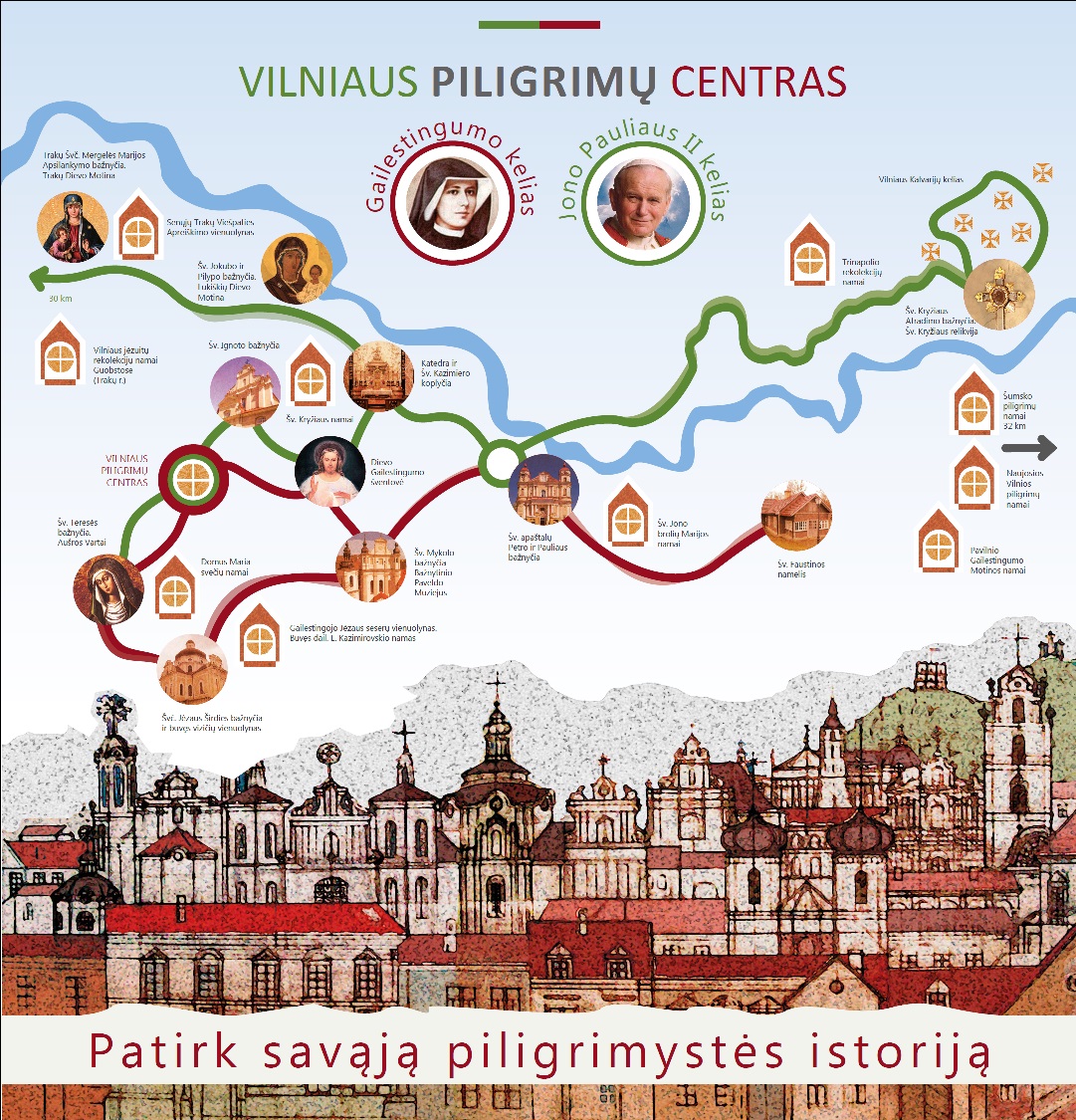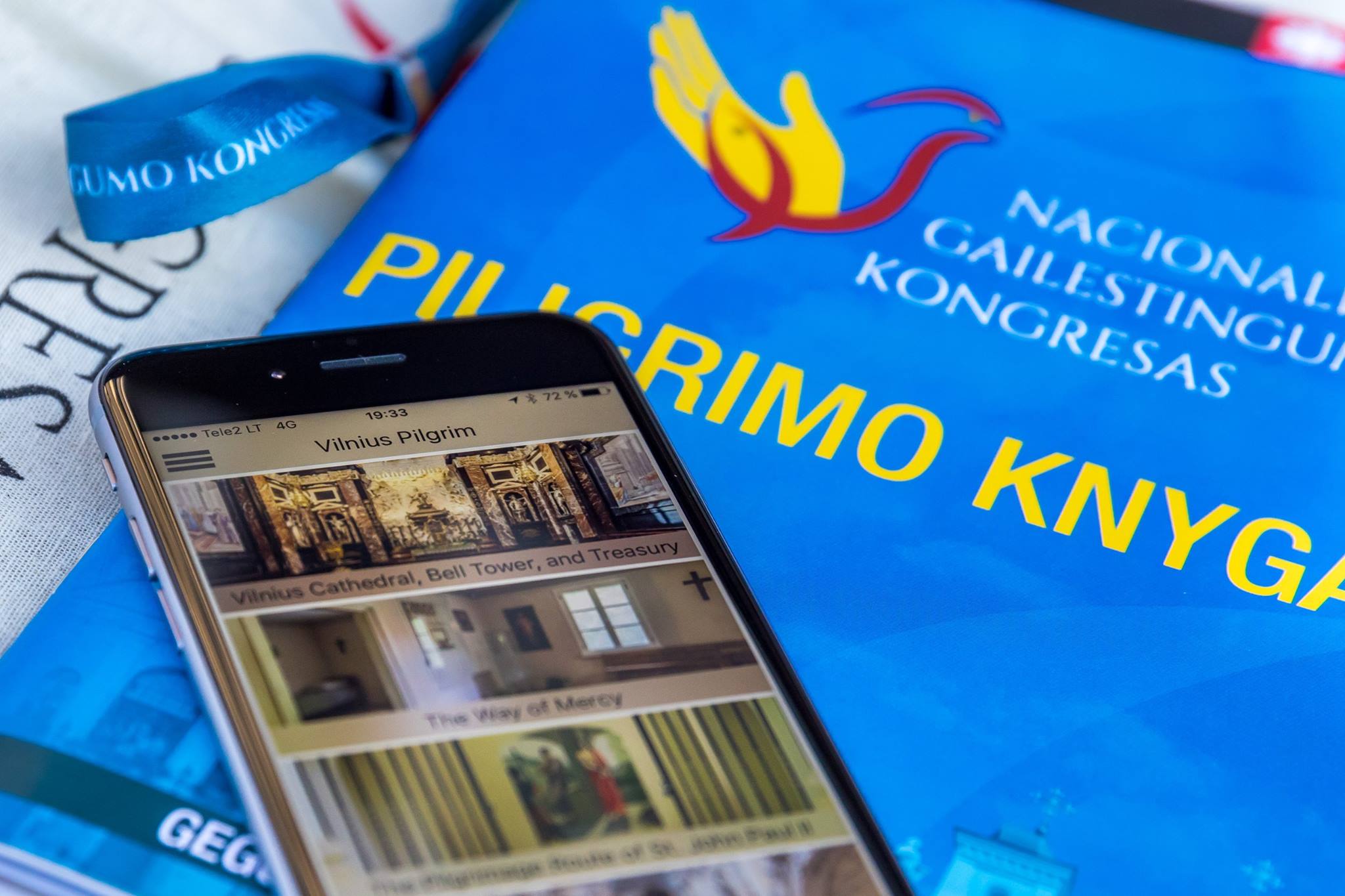Pilgrimage
“The practice of pilgrimage has a special place in the Holy Year, because it represents the journey each of us makes in this life. Life itself is a pilgrimage, and the human being is a viator, a pilgrim travelling along the road, making his way to the desired destination…“ (Misericordiae Vultus)
A pilgrimage is a journey of trust – in God, the path, and the people met along the way. A pilgrim’s goal is to visit special places of God’s grace, and the actual journey to those places is the essence of a pilgrimage. Discussions with fellow travelers and concrete experiences of the natural environment, architecture, art, and traditions of the places visited broaden one’s view of life and faith and, most importantly, lead to a unique encounter with God and oneself.
Pilgrims from all over the world are invited to walk the Way of Divine Mercy in Vilnius and its surrounding areas. This was the path taken by St. Faustina and Bl. Fr. Michael Sopocko. Through these apostles of Divine Mercy, God reminded humanity of His Mercy and revealed ways to seek and have recourse to it. Vilnius became the city from which this message reached the whole world. The most significant places to receive the graces of Divine Mercy along the Way are the Our Lady of the Gate of Dawn Chapel and the Shrine of Divine Mercy.
The „Vilnius Pilgrim“ app, available for iOS and Android, allows pilgrims and visitors of Vilnius to discover and explore the many religious sites found in this City of Mercy. From the Vilnius Cathedral and Treasury, to the many places associated with St. Faustina, to the pilgrimage route of St. John Paul II, the Vilnius Pilgrim app gives both first time visitors, as well as well-tenured residents a fresh perspective on the city’s rich religious heritage. The app includes four pilgrimage routes taking you across Vilnius and provides high-resolution photos, text, and audio descriptions in both English and Lithuanian for each site to enhance your pilgrimage experience. The app can use your phone’s GPS function to easily take you to your next location. You can also bookmark your favorites for your future visits to Vilnius!
Pope St. John Paul II is known today as an apostle of mercy, his life and pontificate serving as a witness to Divine Mercy. In 1978 his encyclical, Dives in Misericordia, Pope St. John Paul II called attention to the mystery of Divine Mercy. During the Great Jubilee Year 2000 he proclaimed Sister Faustina a saint and the first Sunday after Easter as Divine Mercy Sunday. Pope St. John Paul II is one of the most famous pilgrims in history, whose travels, proclaiming the Good News and encouraging solidarity and peace in the world, covered 1.7 million kilometers. One of those visits was to the newly independent Lithuania.
„May pilgrimage be an impetus to conversion: by crossing the threshold of the Holy Door, we will find the strength to embrace God’s mercy and dedicate ourselves to being merciful with others as the Father has been with us.”(Misericordiae Vultus)
In the Archdiocese of Vilnius, Doors of Mercy are open in the following sanctuaries: Vilnius Cathedral, the Shrine of Divine Mercy, the Gate of Dawn, as well as at the Military Ordinariate’s primary sanctuary – St. Ignatius Church.
A pilgrim’s passport can be obtained at the sanctuaries in which the Doors of Mercy are open (either in the sacristy or in the sanctuary itself). Pilgrims can either ask to have their passport stamped or stamp their own passport as a remembrance of their pilgrimage to Lithuania and the Jubilee Year of Mercy.
The Way of St. James in Lithuania leads pilgrims to the Church of the Apostles Philip and Jacob. In it is venerated one of the oldest icons to reach Lithuania in our time – the 17th century Lukiškių Mother of God with Child, an image known for its miracles.

